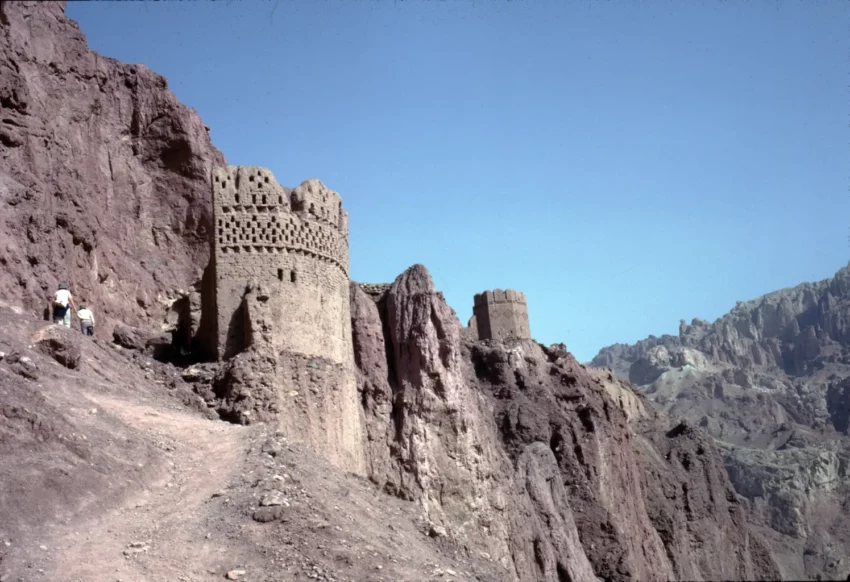Shahr-e Zuhak: The Red City of Bamyan
Shahr-e Zuhak, or the Red City, is a historic site located in Bamyan, Afghanistan. Once home to 3,000 people, this ancient fortress dates back to 500-600 AD. The Hephthalites founded it around the same time as the Buddhas of Bamyan were created. The Red City lies at the easternmost point of the Bamyan valley, where the Kunduz and Kalu Ganga rivers meet. This valley was part of a major route connecting Europe, India, and China.
Get your dose of History via Email
Fortification and Destruction
During the Islamic period, from the 10th to the 13th century, the Ghaznavid and Ghorid dynasties fortified Zuhak. The city, however, met its demise during the Mongol siege of Bamyan. Genghis Khan and his army ransacked the fortress as part of their larger invasion of the Khwarazmian Empire. The fortress’s ramparts, built along steep cliffs, included several watchtowers, some of which still stand today. The citadel, located at the topmost part of the hill, was protected by three more walls. Due to prolonged exposure and lack of conservation, many structures have collapsed or are prone to collapse.

The Bamyan Valley
Enclosed by the high mountains of the Hindu Kush, the Bamyan Valley opens into a large basin bordered by rocky cliffs to the north. The valley’s cultural landscape and archaeological remains include eight separate sites within the valley and its tributaries. The giant Buddha statues carved into the Bamyan Cliffs, destroyed by the Taliban in 2001, once stood 55m and 38m high. Numerous caves, forming a large ensemble of Buddhist monasteries, chapels, and sanctuaries, date from the 3rd to the 5th century C.E.
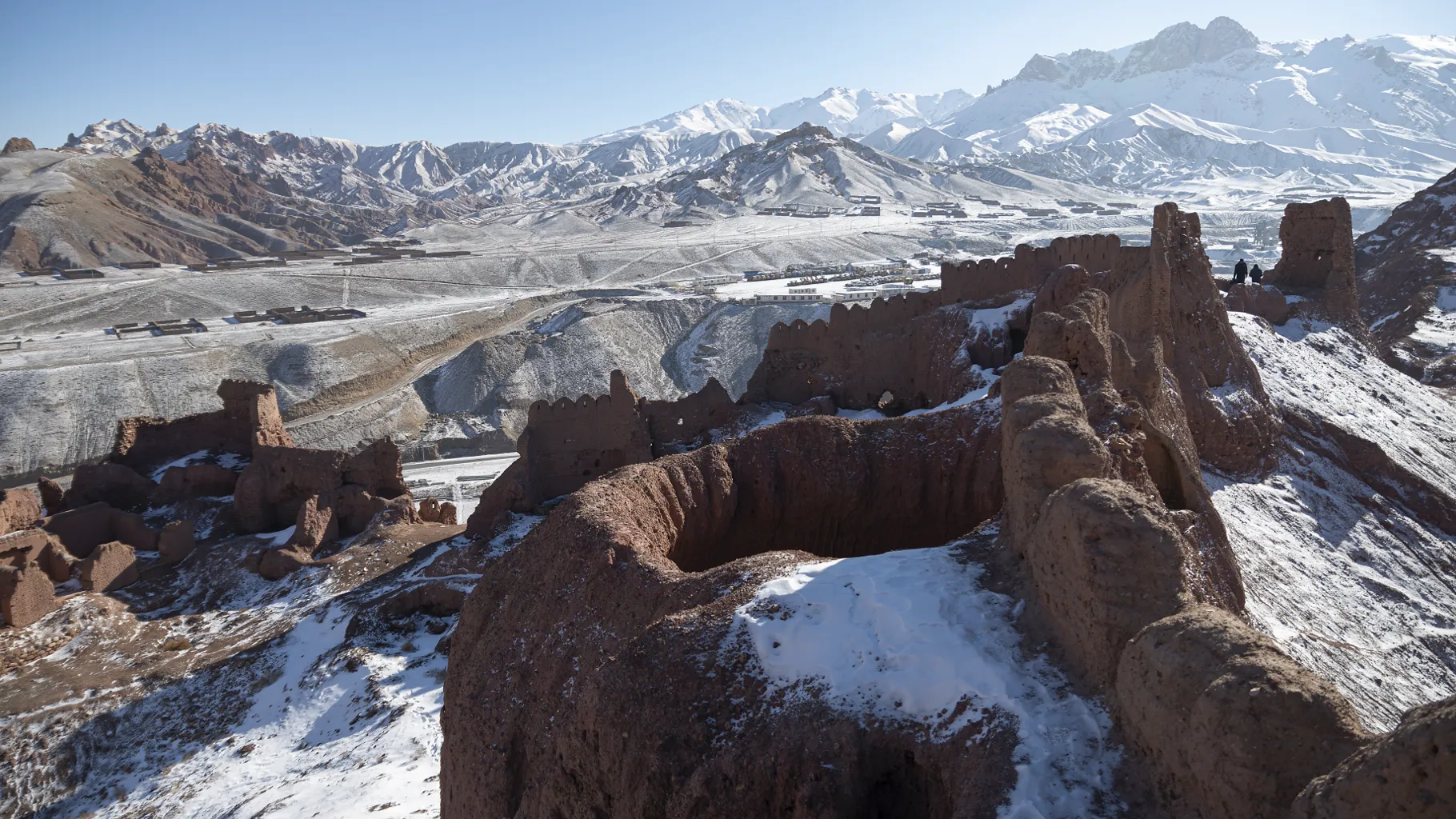
The Caves of Bamyan
The Bamyan Cliffs house numerous caves, many linked by galleries. These caves contain remains of wall paintings and seated Buddha figures. The Kakrak Valley Caves, located 3km southeast of the Bamyan Cliffs, date from the 6th to the 13th centuries. They include fragments of a 10m tall standing Buddha figure and a sanctuary with painted decorations from the Sasanian period. Further southwest, the Fuladi Valley contains the Qoul-i Akram and Lalai Ghami caves, which also feature decorative elements.
Other Fortresses and Monuments
South of the Bamyan Cliffs lies the fortress of Shahr-i Ghulghulah, dating from the 6th to the 10th centuries CE. This fortress marks the original settlement of Bamyan as a stopping place on the Silk Route, linking China and India via ancient Bactria. Further east along the Bamyan Valley, fortification walls and settlements from the 6th to the 8th centuries are found at Qallai Kaphari A and B. Shahr-i Zuhak, located 15km east of the Bamyan Cliffs, also has early remains overlaid by 10th to 13th-century developments under Islamic dynasties.
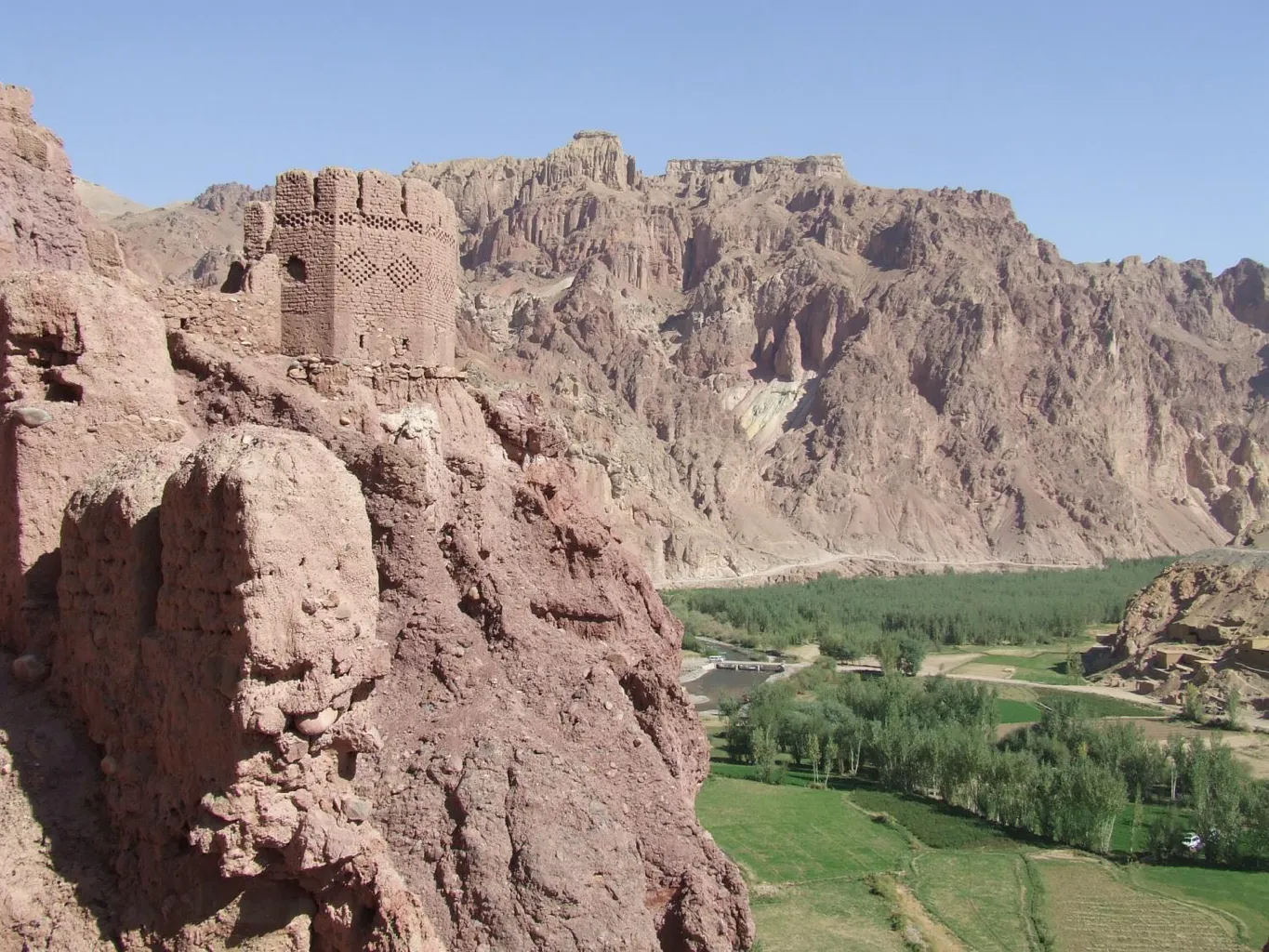
Cultural Significance
The Bamyan Valley’s cultural landscape and archaeological remains reflect artistic and religious developments from the 1st to the 13th centuries. These sites illustrate the Gandharan school of Buddhist art, integrating Indian, Hellenistic, Roman, Sasanian, and Islamic influences. The deliberate destruction of the Buddha statues in 2001 marked a significant loss, but the valley remains a testament to the interchange of cultural influences.
Preservation Efforts
The heritage resources in the Bamyan Valley have suffered from various disasters, with some parts in a fragile state. The destruction of the large Buddha statues was a major loss, but many attributes expressing the site’s value remain intact. The cultural landscape continues to testify to different historical phases, although vulnerable to development.
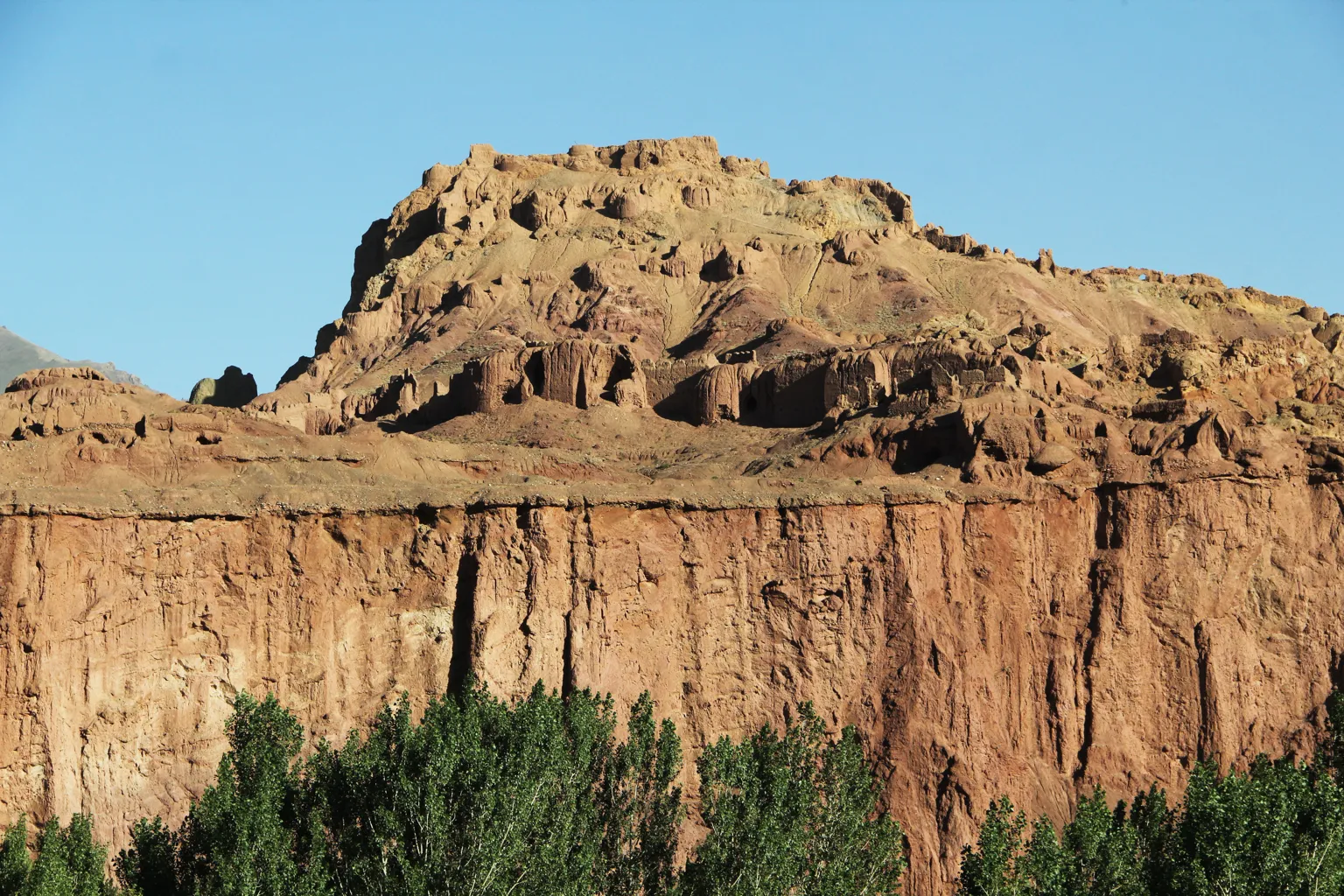
Management and Protection
The State of Afghanistan owns the monuments and archaeological remains of the Bamyan Valley. However, many buffer zone areas are privately owned, with ownership documents being re-established after decades of conflict. The Ministry of Information and Culture manages the site, with additional support from the international community. UNESCO has led a safeguarding plan since 2003, focusing on consolidating the Buddha niches, safeguarding artefacts, and ensuring site safety through de-mining operations. A Management Plan aims to protect, conserve, and present the Bamyan Valley while promoting sustainable cultural tourism.
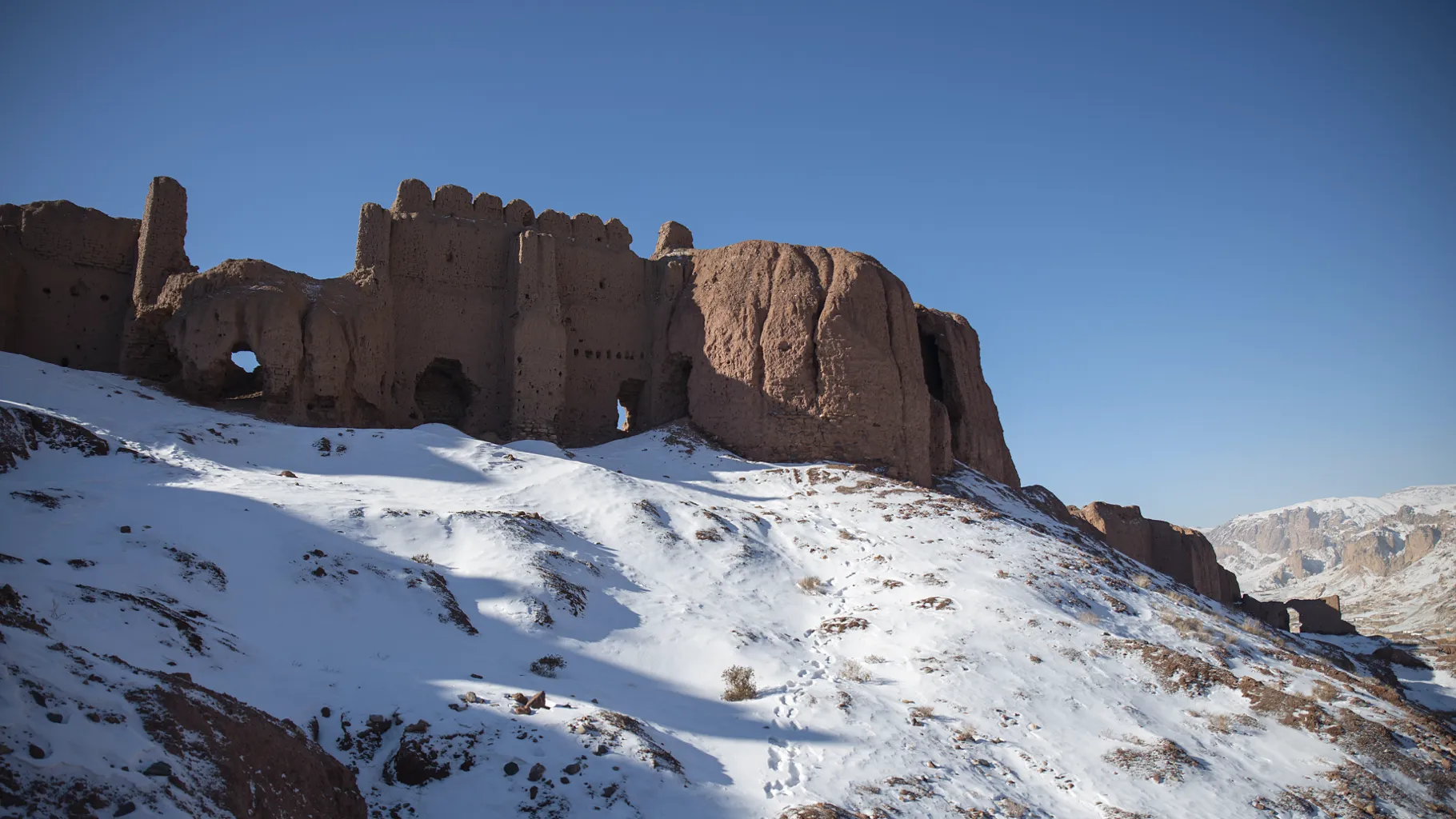
In March 2011, Afghan officials and international experts suggested that the site could potentially be removed from the List of World Heritage in Danger by 2013. This depends on continued progress in addressing security risks, structural stability, and conservation efforts. The Bamyan Valley, with its rich history and cultural significance, remains a site of immense value and ongoing efforts aim to preserve its legacy for future generations.
Sources:

